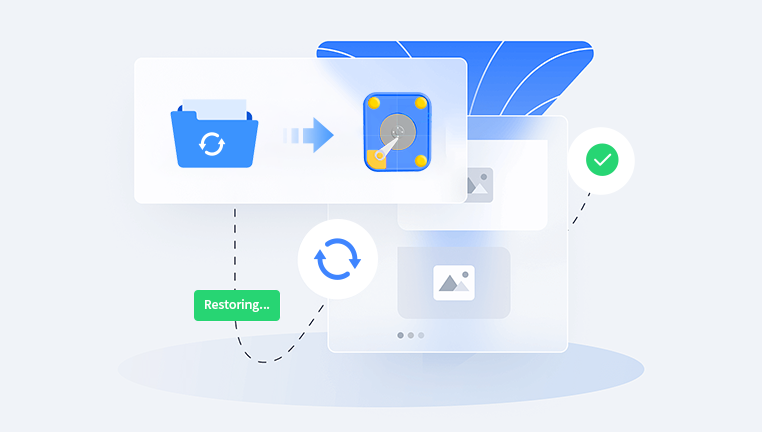Formatting a hard drive can feel like a catastrophe, especially if done accidentally or without a proper backup. In an instant, valuable files from personal memories to essential work documents can seem permanently lost. However, formatting doesn't always erase your data forever. In many cases, especially after a quick format, your files remain intact and recoverable using the right tools and techniques.
Chapter 1: Drive Formatting
Formatting a hard drive prepares it for use by erasing old file structures and creating a new file system. This is essential when setting up new drives or reinstalling operating systems.

There are two primary types of formatting:
Quick Format: Removes the file system structure but doesn't erase the actual data. The space is marked as available, but files can often be recovered.
Full Format: Writes over sectors and checks for bad ones. This process is more thorough and can make data recovery more difficult, but not always impossible.
Common causes for formatting include:
Accidental clicks during disk management
OS reinstallations
Virus infections prompting full drive wipes
Drive errors requiring formatting for reuse
Chapter 2: What Happens to Data After Formatting?
When a drive is formatted, the operating system doesn't usually delete the actual data. Instead, it removes pointers in the file allocation table that tell the OS where each file is located. Until that space is overwritten, the original data often remains intact.
This makes it essential to act quickly and avoid writing new data to the formatted drive to maximize the chances of a successful recovery.
Chapter 3: Immediate Steps After Formatting
The moment you realize you've formatted your hard drive:
Stop using the drive immediately. The more you use it, the more likely new data will overwrite the old.
Do not install any recovery tools on the formatted drive. Use another computer or drive.
Disconnect the drive if possible. This prevents automatic background processes from writing new data to it.
Chapter 4: Choosing the Right Recovery Method
There are several approaches to data recovery, and the method you choose will depend on your level of technical skill, the type of format, and the state of the drive.
Software Recovery is the most accessible and widely used method, effective in cases of:
Quick formatting
Logical damage
Partition loss
Professional Data Recovery Services are ideal when:
The drive is physically damaged
The data is highly valuable
Software attempts have failed
DIY Command-Line Tools like TestDisk work well for experienced users dealing with partition issues.
Chapter 5: Best Data Recovery Software for Formatted Drives
Drecov Data Recovery
Accidentally formatting a hard drive can feel like a nightmare precious photos, work files, and important documents vanish in an instant. But with Drecov Data Recovery, there’s hope. This powerful tool is designed to retrieve lost data even after a full or quick format, offering users a simple and effective way to restore what they thought was gone forever.
When a hard drive is formatted, the actual data isn’t immediately erased. Instead, the operating system marks the space as available for reuse. Until new files overwrite the old ones, recovery is possible. Drecov Data Recovery uses deep scanning technology to search the entire formatted disk, detecting traces of deleted files and reconstructing them for recovery.
Using Drecov Data Recovery is easy. First, install the software on a different drive than the one you need to recover. Next, launch the program and select the formatted hard drive. The software begins a thorough scan, analyzing the sectors for lost data. Once the scan completes, you’ll be able to preview and select the files you want to recover. From images and documents to videos and application files, Panda supports a wide range of file types and systems, including NTFS, FAT32, and exFAT.
Chapter 6: Step-by-Step Recovery Process Using Software
Here is a general recovery procedure that applies to most tools:
Step 1: Download and install the recovery software on a different drive.
Step 2: Launch the program and select the formatted hard drive from the list of detected devices.
Step 3: Choose the type of scan (quick or deep) based on your needs.
Step 4: Wait for the scan to complete. This may take time depending on the drive size.
Step 5: Preview the files and select the ones you wish to recover.
Step 6: Save recovered files to a different drive to avoid overwriting.
Chapter 7: Recovering From a Full Format
A full format reduces the chances of recovery because sectors are overwritten. However, some data may still reside in untouched portions of the drive.
Tips for Full Format Recovery:
Use deep scan modes in advanced software (R-Studio, Stellar)
Clone the drive before starting recovery
Avoid using the drive until recovery is complete
Chapter 8: Recovering Lost Partitions
If your data was lost due to partition errors or accidental deletion, tools like TestDisk can help.
Using TestDisk:
Run the program and select the affected drive
Analyze for lost partitions
Let it rebuild partition structure
Write changes and reboot
TestDisk is effective but requires comfort with command-line interfaces.
Chapter 9: Creating a Drive Image Before Recovery
Creating a clone or image of your formatted drive before running recovery is a smart move.
Benefits:
Prevents further damage to original data
Allows multiple recovery attempts
Can be used by professionals if needed
Tools like Clonezilla and Macrium Reflect help you clone your drive safely.
Chapter 10: What to Do If Software Fails
If recovery software fails:
Avoid repeated scans that may cause sector degradation
Disconnect the drive immediately
Contact professional data recovery services
Top Service Providers:
DriveSavers
Ontrack
Secure Data Recovery
Expect costs to range from $300 to $1000 depending on severity and urgency.
Chapter 11: Preventing Future Formatting Accidents
Label drives clearly to avoid confusion
Disable drive format prompts unless necessary
Use write-protection switches on external drives
Backup regularly using the 3-2-1 rule:
3 copies of data
2 different media
1 offsite location (e.g., cloud)
Chapter 12: Backup Solutions for Data Safety
Cloud Services:
Google Drive
Dropbox
OneDrive
Local Solutions:
External HDDs with scheduled backups
NAS devices for home and business use
Automated Tools:
Windows File History
macOS Time Machine
Acronis True Image
Recovering data from a formatted hard drive is not only possible but often straightforward with the right tools and prompt action. Whether you opt for user-friendly software or professional help, the key lies in acting fast and avoiding further writes to the disk. With good backup habits and careful drive management, you can greatly reduce the chances of future data loss and ensure your valuable information remains safe and recoverable.




